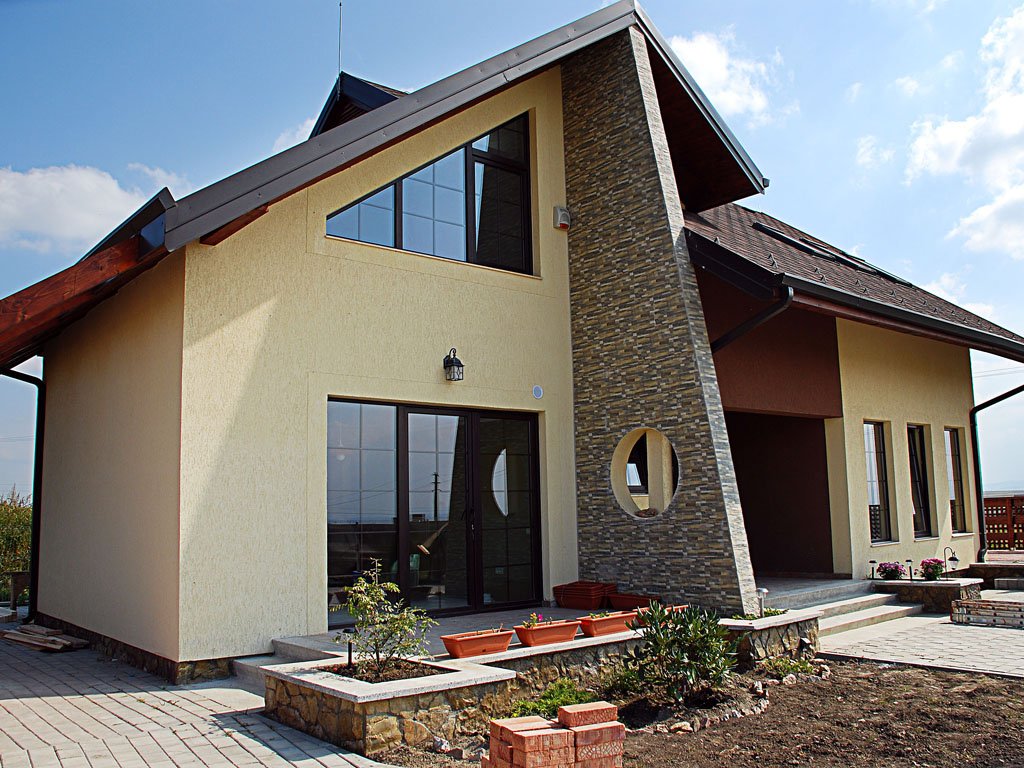The Pitched Roof Types and Designs of the house performs technical functions, and at the same time is an ornament that can give the house a special and memorable look. Pitched roofs and their structures are complex engineering structures, and the comfort and convenience of the people living underneath will depend on their proper arrangement. The Builder’s Guide provides a clear concept of what is meant by the words “roof” and “roof”.
The roof is the upper part of the house, covering it and protecting it from the negative effects of the environment and precipitation, such as rain, snow, solar radiation, hot and cold atmospheric air, etc. In a broad sense, a roof is a structure that perceives the loads from atmospheric precipitation and wind influences, as well as the weight of its outer layer (top layer).
The roof is the upper element of the roof, its cladding that protects the house from all kinds of external influences. It has technical and decorative functions, representing a kind of reliable and beautiful tent that covers the house.
The roofs are flat and sloping. Depending on the shape of the slope, pitched roofs are
pent
tent
tweezers

Sloped roofs come in many different shapes: conical, pyramidal, spire, and more. This article will be dedicated to this type of roof. It will help individual developers to choose the appropriate roof Shape structure and competently carry out control during work on its construction. What it will be and what material it will be made of is determined at the design stage. Much depends on the architectural appearance of the facade of the building and the technology of the roof device.
Content
- 1 Pitched Roof Basics
- 2 Varieties of pitched roofs.
- 3 The main parts of the pitched roof
- 4 About the types and varieties of rafter systems
Basics Designs Pitched Roof Types
Such types of roofs belong to pitched roofs, in which the roof surface slopes towards the outer walls. Such a device makes it possible for it to rain and melt water naturally.
The angle at which the ramp slopes toward the horizon is called the roof angle. It is expressed in degrees. Most pitched roofs have an angle of at least 5 °. There are times when certain sections of the roof can have a tilt angle of 90 °. The device of the pitched roof and its angle of inclination required for your home will depend on the climate, the general architecture of the house and the material chosen for the final cladding. For example, where there is a lot of rain and the roof is loose (metal), the roof slopes should be steep. Where strong winds often blow, to reduce wind pressure, roofs are arranged softer. By choosing the correct roof pitch, you can reduce the cost of building a house. Steep roofs are more expensive because they require large labor and material costs.
What makes pitched roofs attractive is their diversity. But in any case, you need to carry out high-quality downward-flowing water drainage during melting snow and in the rainy season. Pitched roofs can be equipped with an attic or be without it, and also have a living space in the attic.
Varieties of sloping roofs.
Pitched roofs in appearance can be:
- Monotonous. This is the simplest in the form of a ramp, which carries the water in only one direction. They are all built without an attic or have mezzanines in the space under the roof;
- Gable Usually arranged in low-rise buildings. It has two slopes or inclined planes that have a rectangular shape. The lateral parts of the triangular shaped walls used in the construction of said roof are called pediments;
- Four-tone or tent-shaped, formed by gabled roofs. Triangular slopes on the pitched roof device are called hips. The fronts of this roof are cut along the entire height by an inclined plane;
- half hip Its difference with the four-height ceilings is that the sloping planes in said ceilings cut only a part of the pediment;
- Four-edged. In such roofs four gabled planes are connected;
- Mansard. Such ceilings are necessary when the attic space is used for living rooms or for office use;
- Conical and domed. They are arranged to overlap buildings with a circular plan;
- Pyramidal they are used in houses that have a plan in the form of a square or a regular polygon. These tall, elongated ceilings are also called spires.
The main parts of the pitched roof
The sloping roof design includes two types of basic elements: load bearing and enclosure (we are talking directly about the roof).
The supporting elements of pitched roofs are designed to withstand loads from snow cover, wind pressure and roof weight. With their help, the redistribution of loads on the bearing walls and separately located supports is carried out. All of this imposes higher and more stringent requirements on the strength of the supporting elements.

